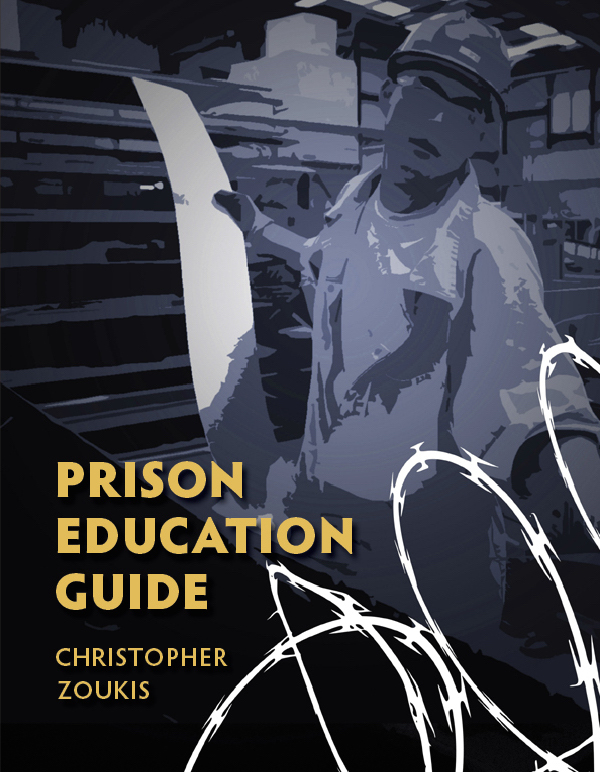Washington Supreme Court Declines to Expand Scope of Attenuation Doctrine Under State Constitution and Reverses Murder Conviction Based on Unlawfully Seized
by Sam Rutherford
The Supreme Court of Washington clarified the scope of the attenuation doctrine under Article I, § 7 of the Washington Constitution, holding that the doctrine applies only when an event supersedes the original tainted police conduct to produce new evidence used in a warrant application but not when only a new reason for using the illicitly obtained evidence emerges. In so ruling, the Court overturned a defendant’s murder conviction and remanded for a new trial.
Background
On June 3, 2017, King County Sherriff’s Office (“KCSO”) Deputy Alexander Hawley observed a man get into the passenger seat of a silver Chrysler Sebring with tinted windows in Burien, Washington. The car drove less than a block, after which it stopped, and the man got out of the passenger side, placing something in his pocket.
Hawley followed the Chrysler and pulled it over. This traffic stop was later ruled unlawful because it was conducted without reasonable suspicion of criminal activity. As a result of the stop, Hawley learned the vehicle was driven by Malcom Otha McGee. Hawley obtained McGee’s phone number and also seized drugs and other items associated with drug dealing from the vehicle. During questioning, McGee admitted to Hawley that he and the man seen exiting his vehicle, later identified as Keith Ayson, had a drug-dealing relationship. McGee claimed Ayson was his drug dealer. Hawley told McGee he would not arrest him for drug dealing in exchange for his agreement to work as a confidential information. McGee agreed but never followed through with the arrangement. Hawley released McGee without arresting him.
Hawley then returned to the area where he first observed the silver Chrysler and located Ayson sitting behind a local business. Hawley informed Ayson of his conversation with McGee. Ayson denied being a drug dealer and instead said that he had been buying crack cocaine and marijuana from McGee, whom he knew as TJ, for about two months. Hawley concluded that he had been duped by McGee and recorded his interactions with McGee and Ayson in a police report, which included McGee’s phone number.
The next day, June 4, a 911 caller reported hearing gunshots near his home. The caller and his friend reported seeing a silver Chrysler parked at a dead-end near the house. They observed two Black men walking near the vehicle prior to hearing the gunshots and then saw the vehicle drive off. Police investigated but found nothing that day.
About five weeks later, on July 11, the same 911 caller found a decomposing body in a wooded area near the dead-end. The person had been shot multiple times. The body was later identified as Ayson. Police found a cellphone on Ayson’s body but were unable to obtain any information from it other than its phone number.
KCSO Detective Michael Glasgow was assigned to investigate the homicide. He searched Ayson’s name in a police database and located Hawley’s report about his June 3 traffic stop of and interaction with McGee and Ayson. Glasgow used the information gleaned from this report to identify McGee as a potential suspect. Glasgow applied for search warrants of McGee and Ayson’s cellular service providers. The warrant relied heavily on information from Hawley’s unlawful traffic stop. Cellphone records showed McGee had made two calls to Ayson on June 4, and cell-site location data placed them in the same vicinity.
Police used the evidence obtained from the first warrant, as well as information from the tainted traffic stop, to secure other search warrants that led to additional evidence implicating McGee in Ayson’s murder. McGee was arrested and charged with Ayson’s murder and for drug dealing based on Hawley’s traffic stop. His defense attorney moved to suppress all evidence seized by Hawley during the traffic stop as well as evidence seized pursuant to warrants obtained based on evidence acquired during Hawley’s unlawful detention and questioning of McGee.
The trial court agreed that Hawley’s traffic stop on June 3 was unlawful and suppressed the drug evidence seized as a result, dismissing the drug dealing charge against McGee. But the trial court refused to suppress the evidence seized pursuant to the warrants obtained based on information acquired during that tainted traffic stop, ruling that Ayson’s murder sufficiently attenuated the traffic stop from the warrant applications.
McGee was subsequently convicted of Ayson’s murder and sentenced to 358 months in prison. The Court of Appeals reversed his conviction, ruling that the trial court erred in admitting evidence obtained through the search warrants because they were based on evidence acquired during the unlawful traffic stop.
The State sought and was granted discretionary review in the Washington Supreme Court.
Analysis
The Court framed the legal issue in the case as follows: “whether our attenuation doctrine allows police to apply for a warrant using tainted evidence when a new circumstance—here, an independent criminal act—lends new significance to the knowledge they gained from that evidence.” The Court’s answer was “no.”
Article I, § 7 of the Washington Constitution provides that “[n]o person shall be disturbed in his private affairs, or his home invaded, without authority of law.” The State did not dispute that Hawley’s traffic stop of McGee on June 3 was unlawful and that all the evidence and information Hawley acquired as a result of that stop was obtained in violation of Article I, § 7. The State also did not dispute that probable cause for the warrants Glasgow subsequently obtained to locate evidence linking McGee to Ayson’s murder were based entirely on evidence derived from the traffic stop. Despite these concessions, the State contended that the evidence seized pursuant to the warrants was nonetheless admissible under the attenuation doctrine.
Typically, evidence derived from a violation of either the Fourth Amendment to the U.S. Constitution or Article I, § 7 is suppressed, the Court stated. However, unlike the Fourth Amendment exclusionary rule that has many exceptions, the Article I, § 7 exclusionary rule is “nearly categorical,” according to the Court. State v. Winterstein, 220 P.3d 1226 (Wash. 2009). In fact, the Washington Supreme Court has recognized only two exceptions to the exclusionary rule under the state Constitution—(1) the independent source doctrine, not at issue in McGee’s case, and (2) the attenuation doctrine. See State v. Gaines, 116 P.3d 993 (Wash. 2005) (recognizing the independent source exception); State v. Mayfield, 434 P.3d 58 (Wash. 2019) (recognizing the attenuation doctrine but narrower in scope than federal counterpart). The Court explained that this is so because, unlike the Fourth Amendment exclusionary rule whose primary purpose is to deter police misconduct, the main purpose of Washington’s exclusionary rule is to protect individual privacy rights. See Justice Charles W. Johnson & Justice Debra L. Stephens, Survey of Washington Search and Seizure Law: 2019 Update, 42 Seattle Univ. L. Rev. 1277, 1455 (2019).
Unlawfully seized evidence is admissible under Washington’s attenuation doctrine only when a “superseding cause” has truly severed the connection between an illegal search and the discovery of evidence. Mayfield. The Court defined superseding cause as an “‘unforeseeable intervening circumstance that genuinely severs the chain of causation between official misconduct and the discovery of evidence,’ giving law enforcement a new, legal basis upon which to conduct their search or seizure.” Id. (cleaned up). This superseding cause must “occur between the misconduct and the discovery of evidence to be used.” Id.
The State asked the Court to reformulate Washington’s attenuation doctrine so that it applies whenever a superseding event occurs after an unlawful search but before the State seeks to use the unlawfully seized evidence—in this case, McGee’s murder of Ayson. The Court, however, rejected this approach because it would water down Washington’s strict exclusionary rule by allowing police to unlawfully gather evidence and then keep that evidence on hand in hopes that it will become relevant in solving some future crime. Such an approach is inconsistent with Article I, § 7 because “it fails to deter downstream privacy violations,” the Court reasoned.
Consequently, the Court concluded that Washington’s attenuation doctrine did not justify the State’s use of evidence unlawfully seized from McGee. Hawley indisputably violated his privacy rights under Article, § 7 by conducting the traffic stop and obtaining evidence—namely, McGee’s phone number, the make of his car, the allegation that he was a drug dealer, and his association with Ayson—whose relevance did not become apparent until after Ayson’s murder. The police then relied on the fruits of Hawley’s unlawful detention to obtain search warrants and additional evidence linking McGee to Ayson’s murder. Thus, the Court ruled that none of this evidence was admissible under the attenuation doctrine because the State failed to establish “any superseding event that produced new evidence used in the warrant application, only a new reason to make the illegally obtained evidence useful.”
Conclusion
Accordingly, the Court affirmed the Court of Appeals’ decision reversing McGee’s murder conviction and remanding for a new trial at which the State will be prohibited from using any evidence derived from the unlawful traffic stop predating Ayson’s death. See: State v. McGee, 2024 Wash. LEXIS 541 (2024).
Writer’s note: This case was decided under the Washington Constitution, not the Fourth Amendment. The evidence seized from McGee during the traffic stop on June 3, 2017, would have been admissible under the Fourth Amendment’s formulation of the attenuation doctrine. Therefore, readers should only rely on this decision outside Washington if their respective state’s constitution has been, or can be, interpreted as providing greater privacy protections than the Fourth Amendment.
As a digital subscriber to Criminal Legal News, you can access full text and downloads for this and other premium content.
Already a subscriber? Login





